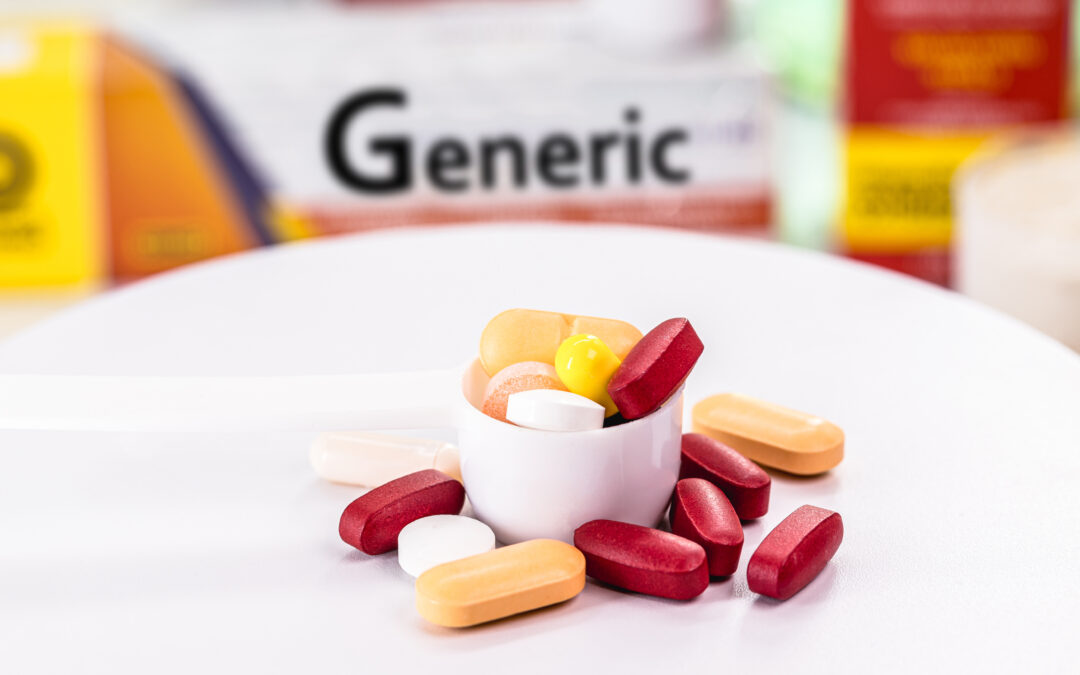Switching from an expensive brand-name medication to a lower-cost generic alternative is a proven savings strategy self-insured plan sponsors employ to reduce plan and participant costs. However, plans may miss significant savings by focusing only on brand-to-generic switches. Upon examining all claims from commercial health plans, Medicare, and Medicaid for a mid-sized western state, a recent study found an 88.3% discount or $6.6M savings when switching participants from 45 high-cost generic drugs to low-cost equivalents. For 32 of those high-cost generics, a 90% discount was identified after switching. Plan sponsors must add generic-to-generic switches to their savings strategy.
Obstacles and Limitations
While the savings associated with generic-to-generic switches is significant, researchers identified several potential obstacles that would inhibit the implementation of this strategy.
- In most states, pharmacies cannot directly substitute low-cost generics for higher-priced drugs due to ingredient, strength, and dosage differences.
- High-cost generics may be subject to spread pricing and thus prioritized on the formulary.
- Certain generics may not be covered, the more expensive brand name may be required for contract and rebate purposes.
- Drug prices change regularly, sometimes quarterly, making it difficult for plan sponsors to track costs accurately.
Fortunately, bolt-on pharmacy savings solutions are available that simplify switching from high-cost to low-cost drugs.
Pharmacy Restrictions
Price is essential when switching from a high-cost to a low-cost drug, but clinical effectiveness is king. Active ingredients, dosage forms, and strengths differ from brand to generic and from generic to generic. Ensuring that an alternative will be clinically sound is complex. At Prescription Care Management (PCM), alternatives are identified and vetted, then integrated into a pharmacy analytics platform that identifies drug switches in real-time. “PCM examines ingredient, dosages, and forms for every drug to help facilitate the transition from physician to pharmacist,” Dr. David Merritt, PharmD, RPh, Chief Pharmacist at PCM, explains, “We contact physicians directly so patients can get safe, cost-effective lower-cost alternatives.” With a unique Pharmacy Engagement Team of licensed pharmacists and certified pharmacy technicians, PCM proactively educates participants and physicians on the benefits of switching. Once approved, prescriptions for the alternatives are sent directly to the pharmacist, alleviating any restrictions on substituting low-cost generics.
Formulary Development
Many PBMs build formularies on spread pricing, prioritizing brand and high-cost generics. Brand drugs are more expensive than generic alternatives and are usually associated with rebates, incentivizing their inclusion on the formulary. Unfortunately, rebates rarely benefit the plan sponsor. The lowest net cost is often achieved by substituting generics for brand medications. In addition to examining brand drugs, reviewing high-cost generics is vital to a robust pharmacy saving strategy. Dr. Merritt explains, “Part of the PCM process is to identify not only brand name drugs but high-cost generics and offer lower cost alternatives. This will, in turn, lower costs to the plan sponsor and can lower costs to the patients that have a percentage copy.” By identifying brand or high-cost generic drugs with safe, effective alternatives, plan sponsors can see significant, long-term cost containment and a healthier formulary that meets their participants’ financial and clinical needs.
Real-Time Drug Pricing
Pharmaceutical manufacturers can change drug prices at any time. In 2021, drug prices increased an average of $150 in January and an average of $250 again in July. Because drug prices influence the discounts achieved when switching to low-cost alternatives, plan sponsors must be able to see real-time pricing to validate spend. One way to ensure pricing accuracy is to include multiple pricing types and platforms to identify clinically effective lowest-cost alternatives. “PCM uses real-time pricing updates from multiple sources, which allow for the most current and accurate information to be integrated into our analysis,” Dr. Merritt says, “This gives plan sponsors and TPAs the most current data when managing spend.” Aggregating pricing data is complex and requires significant resources. Plan Sponsors would be best served to partner with a pharmacy analytics expert to ensure correct, timely data when considering implementing a drug switch program.
Generic to Generic Switches Save Money
While the top 10% of pharmacy spending comprises brand, specialty, and biologic drugs, 80% of prescriptions are generic. Generic-to-generic substitutions are a hidden source of savings. In the face of rising drug costs, plan sponsors should work to identify high-cost generics and their lower-cost alternatives. Partnering with a pharmacy savings program, like PCM, would increase the likelihood of success and alleviate some of the restrictions plan sponsors currently face. Dr. Merritt says, “PCM engages the physicians and the patients in the drug switch process to educate them, increasing the acceptance of therapeutic alternatives. We do not let spread pricing or rebates regulate our process. PCM identifies the most clinically effective cost-saving alternatives that will help lower the plan.” — Crafting a benefits strategy that balances cost and clinical outcomes is complex.
Prescription Care Management (PCM) does the work for you. To see how PCM is helping employees switch from high-cost to low-cost drugs with our Pharmacy Savings Program, click here.

